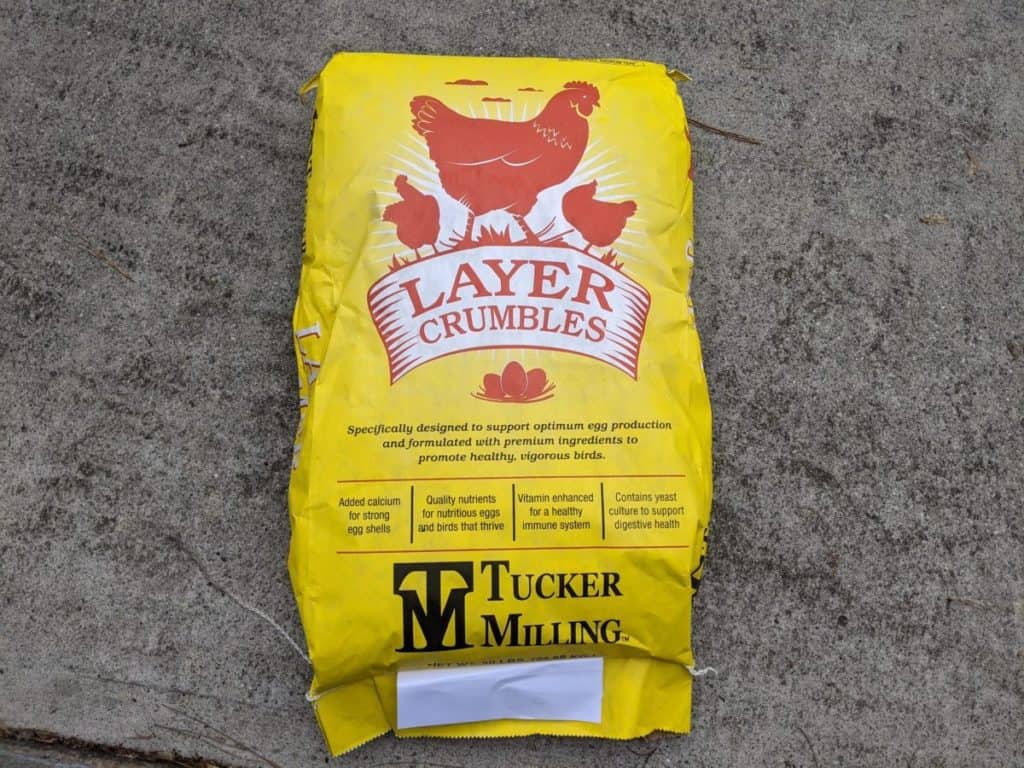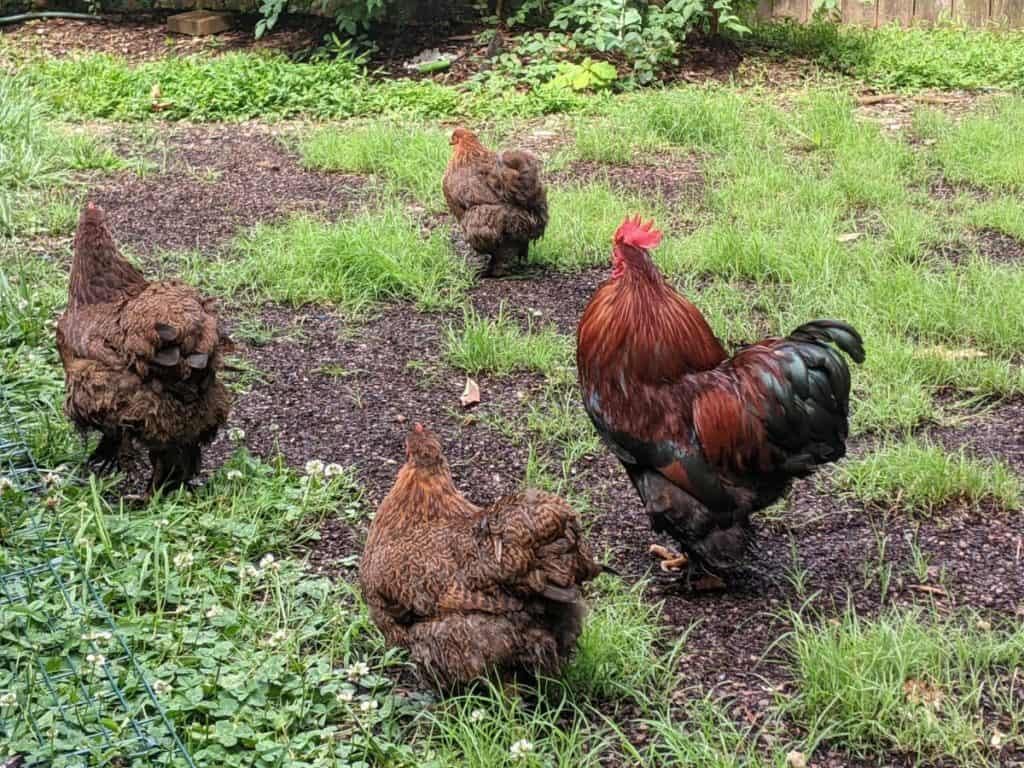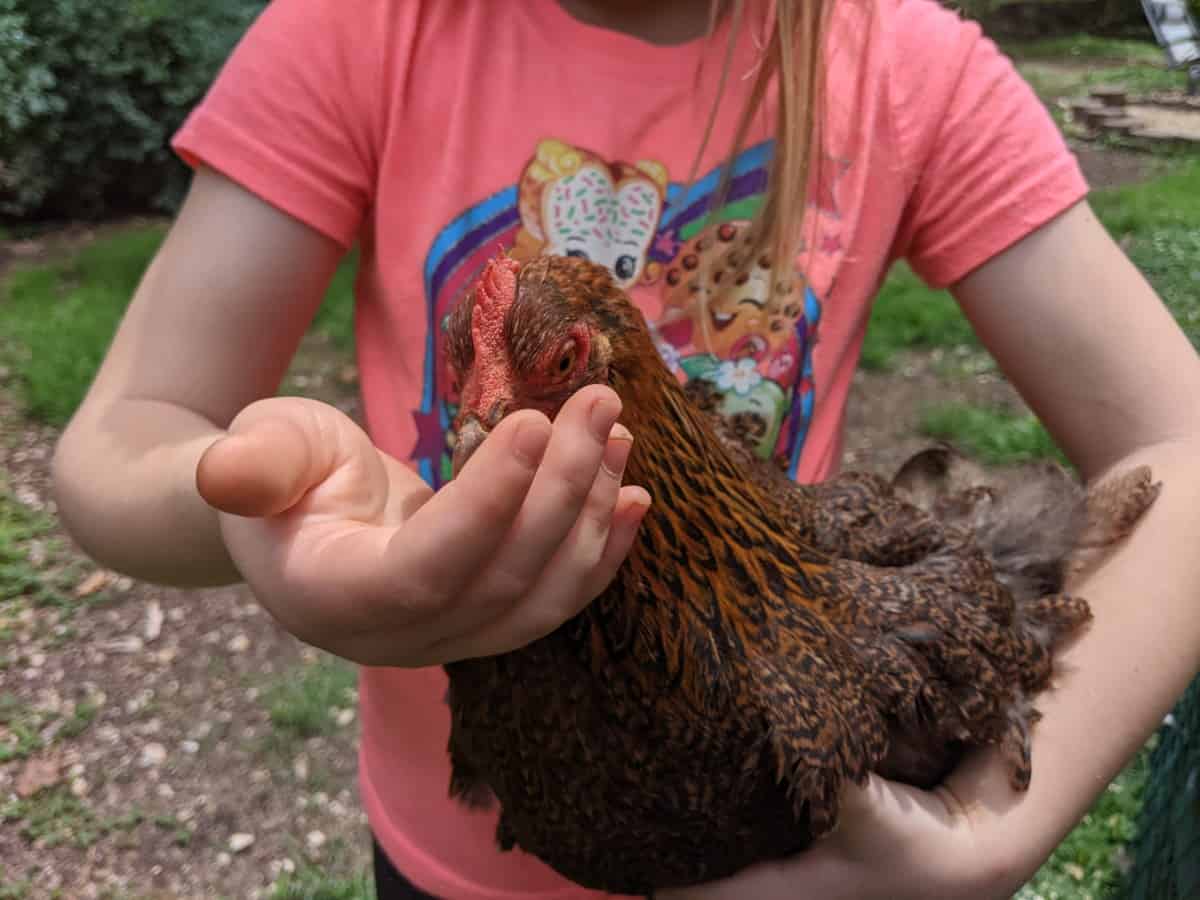An essential part of keeping chickens is calculating how much feed your flock requires monthly. The amount of food that chickens eat each day is variable and depends on a range of factors, but for the sake of planning and budgeting, we need a reliable ballpark figure!
Generally, one should feed chickens ¾ cup per bird per day. This rule applies to laying hens that are fed layer feed. Broilers need much more feed. Several factors influence how much food chickens require each day, like breed, age, season, activity level, and food quality.
The answer to the question of how much to feed chickens daily will depend on who you ask. Commercial chicken farmers know, down to the gram, how much feed their chickens need to optimize their egg and meat production.
Things are slightly different for backyard chicken keepers, who don’t necessarily only care about optimizing production. Let’s look at the factors we need to consider when calculating how much to feed our chickens per day.
How much food do chickens need?
I started off keeping chickens in my backyard as a hobby and saw their colored eggs as an extra benefit. We get enough eggs to enjoy as a family and give some away to friends and neighbors.
My greatest concern is that my chickens meet their nutritional requirements to stay happy and healthy. By feeding your flock ¾ cup of grain feed per bird per day, you can be sure that their needs are being met.
When you first get chickens, it is good to feed them out of wide, shallow bowls for the first week or so. Work with the ballpark figure of ¾ cup per bird per day (about ¼ pound). Initially, it is better to provide chickens with more feed than what you think they need – you do not want to let them get hungry!
Chickens eat the most first thing in the morning and before they roost for the night.
Notice how much feed is left in their bowls at the end of the day, and adjust the amount you are feeding accordingly. Feeding chickens daily can be tedious, so using a feed dispenser is a great idea. Once you get used to how much your chickens eat per day, fill their feed dispenser with the correct amount weekly (or even monthly if you have a large dispenser!).
Also, store your chicken feed in a cool dark container out of direct sunlight.

Factors that influence how much feed chickens eat
- Age. Chickens’ nutritional needs change with each stage of life. Elderly chickens who are not laying eggs anymore eat less than laying hens
- Housing. If chickens are kept in a confined area, they are less active and therefore need fewer calories. Free-range chickens are more active and will need more calories, but you will not have to give them more feed as they will find their own in the garden.
- Breed. Different breeds of chicken have different growth rates and sizes and thus eat different amounts of feed. For example, Bantam chickens eat smaller quantities than regular chickens because their bodies are smaller. Certain breeds of chicken are much better at foraging for food, so they will eat less feed because they also consume insects, vegetation, and wild seeds. Plymouth Rocks, Rhode Island Reds, and Leghorns are excellent foraging breeds.
- Season. During the cold winter months, chickens require a higher number of calories to regrow their feathers after they molt. Chickens do not forage as much during winter (especially if it snows), so they cannot compliment their diet with worms, seeds, vegetation, and insects. Therefore, give chickens more feed during winter.
How much feed do baby chicks need?
Baby chicks grow at a phenomenal rate and require a feed that is higher in protein. When chicks move from the incubator to the brooder, you should provide them with a chick starter feed that comprises at least 18% protein and contains vitamins, minerals, prebiotics, probiotics, amino acids, and grit.
This will support the growth of their bones, feathers, muscles, and organs and the development of a healthy immune system.
Baby chicks should never go without food or water. Keep their feed and water dispensers full at all times, as they need all the calories they can get to fuel their rapid growth.
Regular feed vs organic feed
Organic growing and laying feed is becoming more and more widely available, as the demand for it increases. Organic feeds generally cost about double the price of regular feeds.
After slowly transitioning my flock onto organic feed, I noticed their feed dispensers still had lots left in them at the end of the day. Not wanting to waste expensive organic feed, I reduced their amount of feed gradually. Eventually, I was able to reduce their amount of feed by a third! This offset the extra cost of the premium organic feed.
Tips to avoid wasting feed
Chickens love to scratch the ground, and you will likely find their food containers get full of dirt, bedding, and poo. Use a hanging feed dispenser to avoid this problem. Not having to throw out contaminated feed will reduce the rate at which you go through the feed.
Birds, squirrels, rats, and other creatures find chicken feed irresistible. Do not leave feed out overnight, as this will invite wild animals. You will end up wasting a lot of food this way!
Feed quality
To ensure that your chickens get a complete, balanced diet that enables them to stay healthy and produce good eggs, one must invest in feeding them a high-quality commercial chicken feed. There are a variety of feeds on the market – starter, grower, and layer.
Choose one that is appropriate for your chickens, and do not be tempted to compromise on quality for the sake of cost. Feed your flock the highest quality feed that your budget will allow.
Chickens will need to eat a higher quantity of low-quality feed to get the nutrition they need, so feeding your flock a more expensive feed means you will go through less of it and save money in the long run.

Supplement your chickens’ diet
There are a few ways to reduce the amount of feed you give to your flock. Increasing the nutrient density of their food means that they do not have to eat as much to meet their needs.
One can do this by feeding them sprouted or fermented grains. Sprouted grain and fermented feed are more digestible and contain more vitamins and minerals like thiamin, niacin, riboflavin, folic acid, and B vitamins.
Instead of weeding or spraying chemical herbicides on your lawn and garden, let the weeds grow so that your chickens can eat them. Chickweed, purslane, clover, sorrel, dandelion, and nettle are highly nutritious, your flock will love eating them, and they are free!
One can also plant fodder for your chickens to eat. Kitchen scraps are a great treat for chickens, but avoid giving them any raw potato, onion, or garlic. Allowing the flock to forage and eat a more varied diet will mean that they require less chicken feed.
Conclusion
Feed your chickens ¾ cup of feed per chicken per day – this will meet their daily nutritional requirements. How much feed chickens need per day depends on a range of factors – their age, breed, season, level of activity, and food quality.
Keep an eye on how much feed is left at the end of the day and adjust the amount accordingly. You will figure out very soon how much your chickens eat.
Baby chicks should not be rationed, as they are growing quickly and need to eat as much as possible. Always keep their food and water containers full. Elderly chickens that are not laying eggs anymore eat less than adult chickens, as their energetic requirements are lower.
During the winter, chickens eat more because they need the energy and nutrients to regrow their feathers after they molt.
To reduce your monthly spending on feed, allow your chickens to forage for their own food and supplement their diet with kitchen scraps, sprouted or fermented grains, and fodder. The more nutrient-dense their feed, the less they will need!

